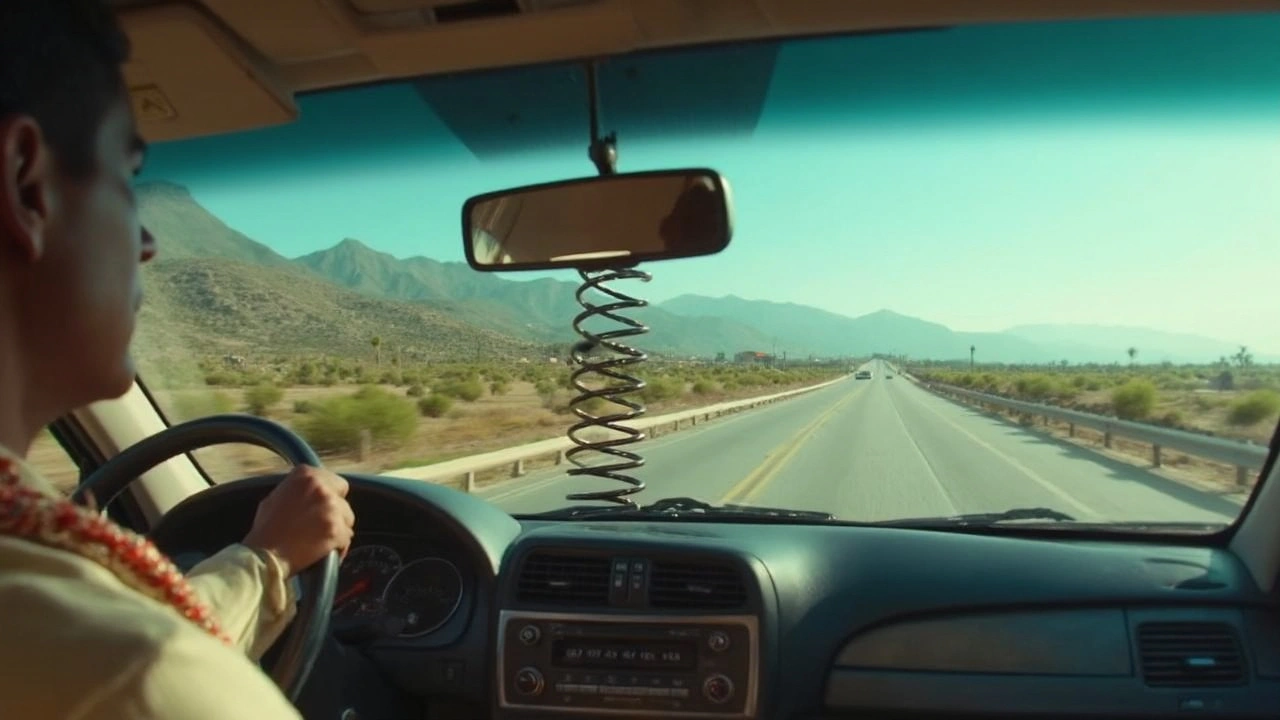 Mar, 21 2025
Mar, 21 2025
Ever felt like you're on a rollercoaster ride when driving your car? That's a clear sign something's up with your suspension shocks. They're like the unsung heroes of your car, keeping it stable over bumps and turns. But how do you know when they're starting to wave the white flag?
Well, if your car seems to bounce more than it should after a bump, it might be time to give those shocks a closer look. Another giveaway is an unusual noise, like banging or creaking, when you're driving. These guys love to make their issues known loudly.
Bouncing and Swaying
When your car starts to feel like an old amusement park ride, bouncing more and swaying through curves, it's more than a fun experience—it's a signal your suspension shocks might be on their way out. These sensations aren't just annoying; they can impact your control of the vehicle.
Bouncing after hitting a bump is often a clear sign. Granted, all cars will bounce a little, but excessive jiggling isn't good. Imagine driving over those speed bumps at the mall, and instead of settling back down, your car keeps bobbing. That constant motion can lead to bigger problems if ignored.
What causes the bounce?
The primary job of your suspension shocks is to absorb the energy from those bumps. If they're worn out, they can't do that effectively, leaving you with that rollercoaster feel. Worn shocks mean less contact between your tires and the road, which is a safety issue waiting to happen.
Swaying Side to Side
Now, let’s talk about swaying. Ever taken a turn and felt your car lean like it's on a yacht at sea? That's a red flag for your suspension shocks. It’s more noticeable in taller vehicles like SUVs and trucks, but any car can suffer from it when shocks start to fail.
The sway doesn’t just make you look like a blurry vision in your rear-view mirror; it can throw off your steering and take longer for your car to stabilize after a turn. This increases stopping distances and reduces reaction time.
Get Back On Track
Ignoring these symptoms can lead to uneven tire wear and even damage to your car's chassis. Best move? Get your shocks checked if you’re noticing these issues. A pro can tell you if it’s time to swap them out before things get worse.
Unusual Noises
We've all been there—driving along when suddenly there's a clunk or a creak that makes you perk up and listen more closely. Unusual noises can be a big red flag that your suspension shocks are giving up on you.
Identifying the Sounds
These noises can vary depending on the issue. If you hear a constant squeaking or creaking when driving over speed bumps, that's your vehicle's way of shouting that it needs attention. Those sounds generally point to worn-out bushings around the shocks or struts.
A clunking sound, on the other hand, often means that a part is loose or has too much play in it. This can be especially noticeable when going over bumps or turning corners. Loose mounting hardware or dried-up rubber bushings can be behind this startling symphony.
Diagnosing the Problem
So what should you do when you hear these noises? First, check if the noise happens over a hard surface or only when turning. Record when it happens and look for patterns—that can help when you talk to a mechanic.
If you suspect the noise might be from your suspension shocks, it's a good time to visit a professional. They can put your car up on a lift and get a better look to diagnose the cause. Identifying the issue early can prevent other parts from wearing prematurely and save you money in the long run.
Take Action
Nipping the issue in the bud not only avoids frustrating and potentially dangerous scenarios but also keeps your ride smooth. Always keep an ear out for any new sound your vehicle might make—doing so can provide clues you need to maintain it correctly.

Uneven Tire Wear
Ever peeked at your tires and noticed they're wearing down unevenly? This could be your suspension shocks crying for attention. When shocks start to fail, they can mess with your car's alignment, leading to uneven wear on those tires.
Why does this happen? Well, good shocks keep your tires planted firmly on the road. If they’re shot, your tires bounce around more than they should. This bouncing means uneven pressure gets applied as you drive, so some spots wear faster than others. Not only does this make for a rougher ride, but it’ll also jack up your tire bills quicker than you think.
Spotting the Signs
One thing to check is if the inner or outer edges are wearing down faster than the rest of the tread. Sometimes, though, the pattern isn’t obvious. In that case, a quick trip to the mechanic could save you a ton of trouble later down the road.
Action Steps
- Every now and then, just give your tires a visual check. Front and back, inside and out.
- Get your wheels aligned regularly. It’s a good habit to get into, especially if you live for those adventurous road trips.
- If things seem off, have a pro take a look. Ignoring it might mean you'll have to replace your tires way sooner than you'd like.
Keeping an eye on uneven tire wear not only extends the life of your tires, but helps you spot other issues early on. So, next time you're washing your car, take a minute to check those tires. It might just save you a heap of trouble!
Leaking Fluid
So, you noticed a puddle under your car after it's been parked for a while? Before you panic, let's talk about leaking fluid from your suspension shocks. It's a common sign of wear and tear you shouldn't ignore.
Shocks are filled with hydraulic fluid, which plays a big role in dampening the impact from the road. When they start leaking, it means they're losing their ability to perform effectively. Bad shocks can lead to a lot more than just a bumpy ride. It can also mean less control over your car, and that's a deal-breaker for vehicle safety.
Spotting the Leak
Checking for a leak is straightforward. Simply look around the tires and undercarriage. If you notice any greasy liquid trailing down from the shocks, that's a red flag. Remember, it's not just any fluid leak we're talking about; it should be oily to the touch.
What Causes the Leak?
Leaks can develop thanks to worn-out seals or just old age. High mileage, rough driving conditions, or even a series of unfortunate potholes can speed up this process. A visual inspection once in a while doesn't hurt. You could save yourself from surprise repair costs.
Why It Matters
Running your car on bad shocks with a fluid leak isn't just uncomfortable—it can mess with your car's stopping distance, making it less safe. And let's be honest, nobody wants to chalk up a fender-bender to an avoidable issue like an uneven tire wear or bad suspension parts.

Longer Stopping Distance
If you've noticed your car taking longer to come to a halt than it used to, it could be a sign of bad suspension shocks. They play a crucial role in keeping your tires firmly planted on the ground, helping your brakes do their job effectively. When the shocks are worn out, your car might need extra space to stop, which can be dangerous, especially in emergency situations.
How Shocks Affect Braking
Worn-out shocks can lead to decreased efficiency in braking. This happens because they struggle to control the weight of your car as it shifts forward when you apply the brakes. Instead of gripping the road, your tires might bounce, reducing traction and increasing the stopping distance.
- Normal brakes: Short stopping distance, firm road grip.
- Worn shocks: Increased stopping distance, less road grip.
To ensure your vehicle remains safe, it’s a good idea to test the stopping distance every now and then. If you notice any changes, address them sooner rather than later.
| Condition | Estimated Stopping Distance (at 60 mph) |
|---|---|
| Good Shocks | 130-140 feet |
| Bad Shocks | 150-170 feet |
Always remember, a little attention now can prevent bigger problems later. Keeping an eye on your car's suspension parts could save you from unexpected roadway surprises.